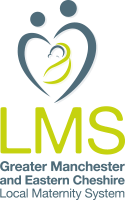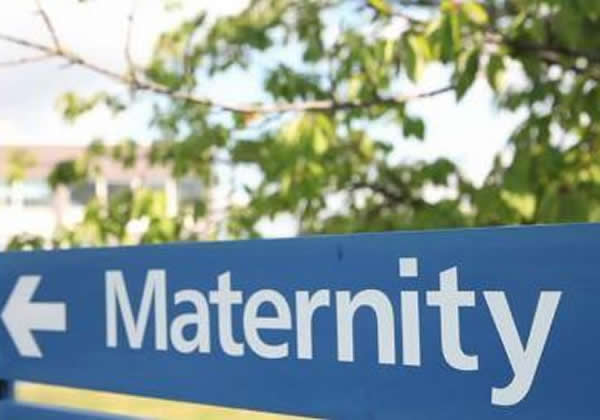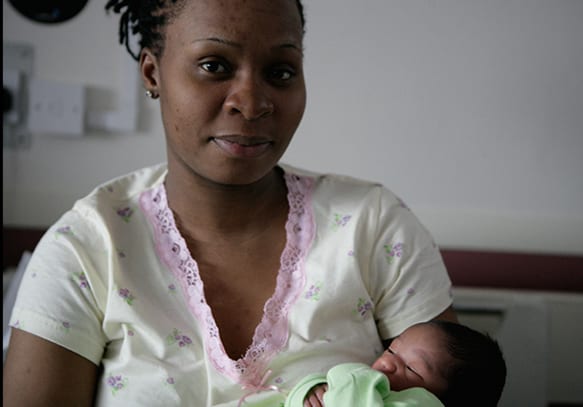Postnatal care
Infant feeding in the early days.
Babies may be ready to feed soon after birth, particularly if they are skin-to-skin with you.
It’s important to look out for signs that your baby may want to feed and it is good to have regular skin-to-skin contact with your baby that may help you and baby get to know each other and identify any of those early feeding signs. A new born baby will require a very small amount of colostrum (first milk from the breast) or formula milk. It is important to feed responsively. This means – (regardless of whether you choose to breast-feed or formula feed your baby) that you feed baby as soon as they show signs of being hungry (sometimes these are called feeding cues) and allow them to feed for as long as they want.
There is a lot more detail around infant feeding, including links and resources in the Thinking about Infant Feeding section.
Should you want support from infant feeding team locally please see these contact details.
For information on safe sterilisation of bottles for parents to use if they choose to feed their baby expressed breast milk or formula milk please refer to a guide to bottle feeding leaflet which has visuals on safe sterilisation.
This UNICEF Baby Friendly Website page provides parent resources for those who choose to breastfeed and those who choose to formula feed. You can download resources about responsive feeding and other information.
Breast care after birth.
Hand expressing your breastmilk
If you are pregnant or breastfeeding, milk expression by hand is a useful technique to learn. It’s a handy way to relieve engorged breasts. You can also use it to stimulate milk production and provide milk for a baby who is not breastfeeding well or needs more milk.
La Leche League GB offers helpful tips.
The UNICEF Baby Friendly Initiative has a useful video on hand expressing.
Benefits of breastfeeding
- Breast milk is a bioactive fluid. That means that it contains lots of nutrients such as proteins, fats, vitamins and minerals, plus vital antibodies that fight germs and can reduce the risk of your baby getting infections and diseases.
- It also contains hormones that help your baby’s development. Breast fed babies also have a lower risk of ear, respiratory and gastro-intestinal infections and diarrhoea.
- Breastmilk is also beneficial for mums, reducing your risk of obesity and of Type 2 diabetes. Your own risk of breast and ovarian cancer also reduces if you breastfeed. In addition, breastfeeding can reduce the risk of cardiovascular disease and osteoporosis, so they are major benefits to your health.
- Breastfeeding is also free, can be done anywhere at any time and with no plastic or packaging has less of an impact on the environment.
- Breastfeeding also promotes a growing attachment between mums and babies, with an emotional closeness forming that will continue to aid your baby’s development for years to come.
Challenges during breastfeeding
Information on national breastfeeding support groups and organisations:
The Association of Breastfeeding Mothers which has a breastfeeding counsellor telephone helpline (0300 330 5453) and provides written information on breastfeeding issues.
The Breastfeeding Network which runs the national breastfeeding helpline (0300 100 0212) and provides written information on breastfeeding issues.
The La Leche League GB which runs a telephone helpline (0345 120 2918), provides online help, runs local meetings, and provides written information on breastfeeding issues.
The National Childbirth Trust which runs a telephone helpline including breastfeeding support (0300 330 0700), runs antenatal courses, and provides written information on breastfeeding issues and infant feeding.
Neonatal care
Neonatal Units are a part of hospitals which provide care for babies who are born prematurely (before 37 weeks’ gestation), with a medical condition which needs treatment, become sick during or after birth or are born at a low birthweight.
The word ‘neonatal’ means newborn, or the first 28 days of life. Approximately 1 in 7 babies require neonatal care at birth.
Find out more about neonatal care below:
Care of your baby.
Safe Sleeping:
When putting your baby to sleep, make sure they are lying on their back with their feet at the bottom of the cot. There should be no cot bumper, toys or sleep pods used. To check your baby is the right temperature, place two hands on their tummy, neck or back; they should feel the same as you. If you are worried about how to dress your baby at night in warm or cold weather, please visit the Lullaby Trust website and there are further details on our website.
Skin care for your baby:
After your baby is born, they will be covered in a sticky white substance called vernix. This should be allowed to absorb into your baby’s skin for extra protection as your baby’s skin is very delicate. In the first few weeks babies do not need any lotions/bubble bath/soaps, so when bathing your baby just use warm water.
Your baby might get sticky eyes and this is very common. To clean them, just gently wipe outwards from the inner corner of the eye in one sweep – use a cotton wool ball that has been dampened in cool boiled water. If you need to wipe again, use a new cotton wool ball; do not use repeated sweeps with the same ball as this might pass on infection.
It is very common for babies to get nappy rash and it can be caused due to prolonged exposure to urine and faeces. To help with this ensure you regularly change your baby’s nappy, clean the nappy area with water and cotton wool and allow to dry. You can use a petroleum-based lubricant as a barrier to protect the skin.
Things to be aware of:
Your newborn may pass substances called ‘urates’ during the first 24-48 hours of life. These are pink/red substances found within the nappy and are not a problem at this age. However, if you continue to notice these within the nappy, you should contact your midwife to discuss this further.
Some infants may have more wet and dirty nappies. This is often a good sign as it indicates that your baby is getting enough milk when breastfeeding.
Whilst an increase in bowel movements can be a good sign, contact your midwife or health visitor if you are seeing frequent, explosive, offensive nappies as this could be indicative of an underlying problem such as an allergy.
If you have a baby girl you can sometimes find a tiny amount of blood in the nappy; this is often mucousy and is a pseudo-menstruation (false period) and is due to the withdrawal of the mother’s hormones once baby is outside of the womb. It is a normal process and nothing to worry about. If you are worried about what you are seeing, please contact your midwife.
What's in a nappy?
Nappy content
1-2 days old:
At one to two days old, you should expect your newborn to be having at least two wet and at least one dirty nappy per day. The first bowel movement is known as meconium and is often compared to ‘tar’ due to its black sticky appearance.
3-4 days old:
By three to four days old, you should expect your newborn to be having at least three wet and at least two dirty nappies per day. By now, the stool should be changing colour from black to brown, green and yellow. The stools should also be looser in consistency.
5 days plus:
By five days old, you should expect your newborn to be having at least five wet and around one to two dirty nappies per day. The stool should be mustard-yellow in colour.
Older breastfed babies:
You should expect your baby to be having at least six wet and at least two dirty nappies per day as they get older. The stool should be mustard-yellow in colour and have a soft, runny consistency. The stool of a breastfed infant may have a ‘sweet’ smell.
Older Formula fed babies:
You should expect your baby to be having at least six wet and at least one dirty nappy per day as they get older. The stool should be yellow in colour, have a paste like consistency but should not be hard or firm. The stool of a bottle fed infant may have an offensive smell.






